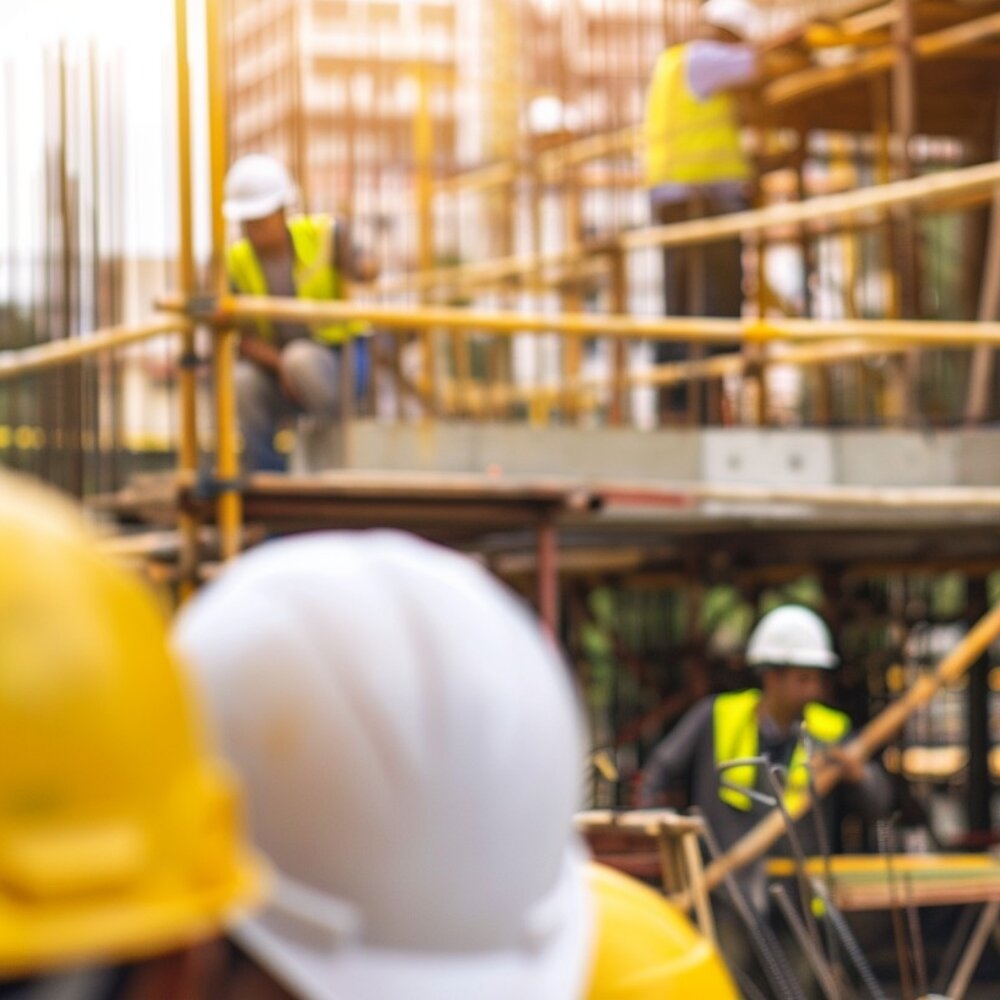
Want to provide workers with a safe and solid platform to work at heights? While mobile elevating work platforms and ladders are viable options, scaffolding may be on your mind.
Scaffolding systems have been used for more than a millennium to carry out various tasks, some of them of great historical importance – from the cave paintings in Lascaux, France, to the construction of the Pyramids of Giza. Today, modern technology and materials, combined with millennia of accumulated knowledge, have allowed us to create sophisticated scaffolding systems that can reach greater heights. They will provide your crew with a practical and safe solution for work access on construction sites. Let’s explore.
Types of Scaffolding
In construction, a variety of scaffold types are employed, each boasting different capabilities:
Frame Scaffolds
The most commonly used scaffolding is often seen on the exterior of buildings for work on walls. Frame scaffolds are made up of large welded steel or aluminum frames connected with pins and bracing bars (or gooser bars). In Ontario, frame scaffolding can be installed up to 15 metres in height without the need for an engineer's drawings. However, using it safely still requires working at heights training.
Modular Scaffolds
Also known as system scaffolding, it consists of prefabricated steel or aluminum components that are connected at fixed points with ring-like rosettes to which ledgers and transoms can be secured. They offer more customization and flexibility than frame scaffolds and are a popular choice in industrial environments.
Tube and Clamp Scaffolds
Similar to modular scaffolds, tube and clamp scaffolds are also made up of prefabricated components. However, instead of fixed points, they can be connected anywhere along the lengths of the components, allowing these scaffolds to be very adaptable and function well in intricate workspaces with lots of obstructions. In Ontario, tube and clamp scaffolding can be installed up to 10 metres in height without the need for an engineer’s drawings.
Mobile Scaffolds
Also known as baker’s scaffolding, they are equipped with wheels for easy mobility. Mobile scaffolds are ideal for painting. They can also be used for plastering.
Pump Jack Scaffolds
Usually used for outside building work, these scaffolds are composed of platforms that can be lifted or lowered using brackets.
The dimensions, working environment, and task-specific requisites – all play a role in selecting the appropriate scaffold. But once you are done selecting the scaffold most suitable for your job, it is critical for you to ensure your crew has a valid working at heights training certificate. That is key to safe work.
Scaffold Legislation in Canada
Scaffold use in Canada is subject to stringent rules. Whether industry standards fall under federal statute – like Canada Labour Code Part II, or provincial regulations – like O.Reg 213 Construction Projects in Ontario, employers must make sure that scaffolds are properly constructed, erected, utilized, and removed by industry standards, regulations, and manufacturer’s instructions.
Crucial Safety Concerns for Scaffolding
Before your crew gets on a scaffold to carry out intended tasks, it is important to bear a few critical safety concerns in mind. These include:
Inspection
Scaffolds must, at a minimum, be inspected at the beginning of each shift. Visual inspections are useful in locating worn-out, damaged or malfunctioning parts that can jeopardize safety. All trained and competent workers will be aware of the scaffold's safety status if it is tagged according to its condition.
Stability and Foundation
The foundation of a scaffold determines its stability. According to the Code of Practice for access scaffold CAN/CSA 797-18, no scaffold can exceed three times the smallest lateral base dimension in height without being tied into a building or structure. To prevent the scaffold from sinking into the ground, it is essential to use mudsills or baseplates to distribute the weight of the scaffold.
Proper Load Management
Scaffolds should be designed to withstand at least 4x their peak load, including the weight of equipment, materials, and workers. Scaffold overloading carries a danger of collapse and damage.
Personal fall protection and guardrails
Working at heights increases the risk of falls, which can be lethal. Every exposed side of a platform must have guardrails if a worker could fall 8 ft or more, and workers must use personal fall protection equipment when required.
Training
It is the responsibility of employers to provide workers with information and working at heights training for the safe use of scaffold systems. This covers guidance on assembling scaffolds, inspection, identifying hazards, and using the equipment safely.
Real-Life Incidents: A Cautionary Narrative
Two employees of the Domtar pulp and paper company in Windsor, Quebec, were fatally injured in 2021 as a result of a deadly scaffolding collapse. The Quebec Workplace Safety Board (CNESST) concluded that underestimating the load capacity and omitting crucial bracing on the seventh level were the reasons behind the collapse. This tragedy made clear the necessity of stricter laws, engineering, training, and supervision.
Scaffolding Safety Summary
Scaffolds are a practical and safe solution for providing work access on construction sites. Like other equipment, such as scissor lifts, scaffolds must be used correctly to guarantee worker safety. Employers can significantly lower workplace accidents by ensuring inspections are carried out on scaffolding and that teams and supervisors have a working at heights training certificate before work begins.
At Act First Safety, we offer comprehensive Scaffold Safety Training in Scarborough, Ontario. Designed to empower workers with the knowledge and skills needed to stay safe when working at heights, our course ensures that you and your team understand the hazards, legislation, equipment types, safe usage, erection and disassembly, inspections, and more. Contact us to protect your workplace, safeguard your workers, and adhere to Ontario regulations for scaffolding use with our expert training program.

